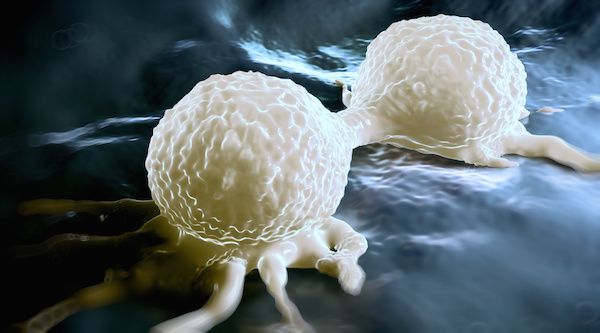Survival Improved With the Addition of Chemotherapy for Small HER2-Positive Breast Cancer
"We know that, in general, patients with this particular subset of hormone-receptor-positive breast cancers should get chemotherapy, but all the studies showing the benefits of chemotherapy included patients with large cancers."

The addition of chemotherapy to surgery, radiation, and hormone therapy provided survival benefit for some patients with small node-negative breast cancer who are hormone receptor (HR)-positive as well as HER2/neu-positive, also described as ERBB2-positivity, according to an analysis lead by physicians from Roswell Park Comprehensive Cancer Center.1
Although patients of this population are not typically offered chemotherapy, the analysis demonstrated that the risk of death within 5 years was decreased by approximately 50%. The findings were based on data from more than 10,000 patients across the United States.
“We know that, in general, patients with this particular subset of hormone-receptor-positive breast cancers should get chemotherapy, but all the studies showing the benefits of chemotherapy included patients with large cancers,” said Anurag K. Singh, MD, director of Radiation Research and Professor of Oncology, in a statement. “The question remained whether chemotherapy was worth it for smaller tumors, given the typical side effects such as hair loss and increased nausea. For these patients who have one risk factor, is there a benefit for the addition of chemotherapy? We found that there is a statistically significant benefit.”
Overall, 10,065 patients with a median age of 59 (range, 51-67) were identified for the analysis, which included 5,346 patients who received chemotherapy in addition to hormone therapy and 4,719 patients who received hormone therapy alone. Median follow-up was 41.8 months.2
On multivariable analysis, the addition of chemotherapy-induced an improved overall survival (OS) (HR, 0.69; 95% CI, 0.52-0.90; P =.006). The tumor size was associated with worse mortality as a continuous variable (HR, 1.07; 95% CI, 1.03-1.12; P =.002). Additionally, the interaction between the multiagent chemotherapy and tumor size was statistically significant (P =.02).
Cox multivariable analysis showed an 8-mm cutoff was statistically significant in the repeated analysis of the tumor size cutoff ranging from 2 mm to 9 mm (P =.01); there was a large effect size and narrow 95% CI in the subgroup analysis.
Multiagent chemotherapy was not associated with an improvement in OS for tumors of 8 mm in size or smaller (HR, 1.00; 95% CI, 0.70-1.43; P =.99) in comparison with tumors of 8 mm to 10 mm in size, favoring use of chemotherapy (HR, 0.53; 95% CI, 0.36-0.78; P =.001). These findings were similar in data for 1,641 and 648 matched pairs for <8 mm tumors (HR, 0.88; 95% CI, 0.58-1.34; P =.55) and 8 to 10 mm tumors (HR, 0.48; 95% CI, 0.27-0.85; P =.01).
Investigators queried the National Cancer Database for female patients with HR-positive, ERBB2-positive, pT1a-bN0 breast cancer who were diagnosed between the years of 2010 and 2015. These patients had to have received hormone therapy with or without the addition of chemotherapy. The Kaplan-Meier method and the Cox multivariable analysis were used to analyze OS.
Investigators noted that this is the first report of their knowledge to suggest an association between improved survival and adjuvant chemoendocrine therapy in this patient population for tumors 8 mm to 10 mm versus <8 mm.
“For breast cancer, small differences become really important, and careful stratification allows us to do graduated decision-making,” said Oluwadamilola T. Oladeru, MD, a contributor of this research and resident physician at Massachusetts General Hospital Cancer Center, in a statement. “Now we can say to the patient with a small tumor, ‘Here’s what happened with 10,000 other patients,’ and quantify the benefit for getting chemotherapy in their group.”
References
Chemotherapy Should Be Considered for Patients With Small ERBB2-Positive Breast Cancers [news release]. Buffalo, NY: Roswell Park Comprehensive Cancer Center; April 17, 2020. https://bit.ly/34XL3pr. Accessed April 23, 2020.
Ma SJ, Oladeru OT, Singh AK. Association of survival with chemoendocrine therapy in women with small, hormone receptor-positive ERBB2-positive, node-negative breast cancer. JAMA. 2020; 3 (4): e202-507. doi: 10.1001/jamanetworkopen.2020.2507.
Durability and Intracranial Efficacy Observed With T-DXd in HER2+ MBC
January 13th 2025During a Case-Based Roundtable® event, Ian Krop, MD, and participants discussed how the outcomes of the DESTINY-Breast03 and other trials impact treatment of metastatic HER2-positive breast cancer in the second article of a 2-part series.
Read More